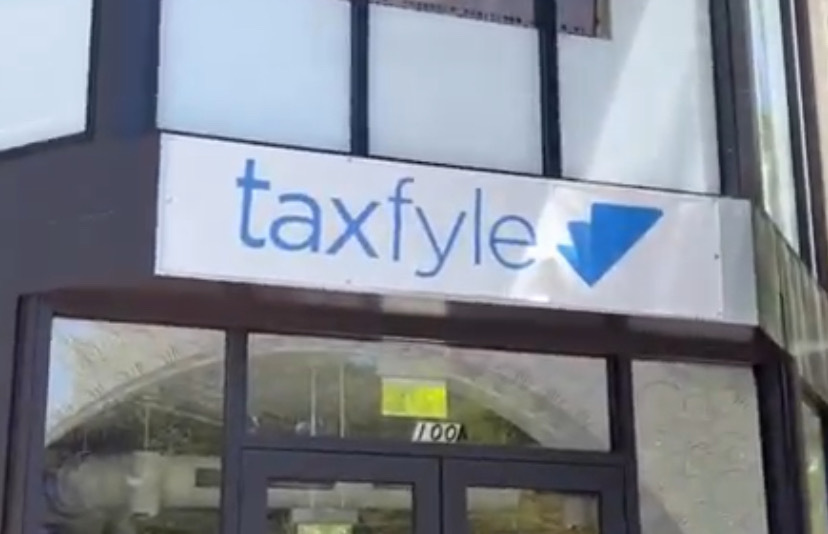5 Things Accountants Need to Know About Vehicle Programs
By Craig Powell, President and CEO, Motus
Providing for the vehicle needs of mobile employees typically falls within organizations’ Finance & Accounting functions, yet contrary to some beliefs, vehicle programs extend beyond those employees in “specialty vehicles” like delivery trucks or service vans. Every business with employees that drive more than 3,000 business miles each year – from pizza and beverage delivery drivers, to medical device sales representatives, to store managers that travel between retail locations throughout the day – needs to take mileage reimbursement into consideration when it comes to their finances.
Still, even for those accountants that are well informed, mileage reimbursement is a surprisingly complex topic. Confusion around it has led to many high-profile businesses having to pay out large sums in legal settlements to their employees.
RadioShack, for example, paid $4.5 million to settle a lawsuit where an employee claimed they weren’t reimbursed for expenses they incurred using their personal vehicle for inter-company store transfers. In another case, Starbucks settled a mileage reimbursement-related class action lawsuit of $3 million after employees alleged that Starbucks did not reimburse for mileage expenses incurred on the job “as a matter of company policy.”
The list could go on, but the bottom line is this: understanding mileage reimbursement has the potential to save businesses and their finance teams millions of dollars in the long run. With that in mind, there are a few basic things you need to know in order to lay the foundation for fair and accurate business vehicle programs:
1. There are different accounting methods for company vs. employee-owned vehicles
In some instances, employees are provided with a vehicle that the company owns (or leases). These are often referred to as fleets, and most frequently involve specialty or branded vehicles. While fleet programs provide employers with oversight and control, they can also add to the corporation’s liabilities, including the 24×7 risk that comes with having an employee driving the company’s car and the administrative burdens of managing insurance and vehicle maintenance. Providing company-owned/leased vehicles also requires a material, up-front capital investment.
When thinking about fleet programs, companies must also decide whether their vehicles primarily serve as an employee perk, or whether the main objective is to provide for employees’ business-related transportation needs. Employers can choose to allow personal use of company vehicles with both options, but consider leveraging personal use chargebacks (allowing the company to recoup some of the costs associated with drivers’ personal use of those vehicles) to ensure a cost-effective program.
Employee-owned vehicles require a different set of considerations altogether. While the company doesn’t have direct control over things like the make/model of car driven, maintenance schedule and the employee’s insurance provider, it is critical that employees are fairly and accurately reimbursed for all costs associated with the business use of their personal vehicle.
2. The IRS Safe Harbor Rate is not a reimbursement rate
Set once per year, the IRS Safe Harbor Rate is calculated annually based on the average cost to operate a vehicle during the previous year. It is intended to be a basic cents-per-mile rate (i.e. a flat per-mile rate) that individuals can use to calculate a tax deduction for their unreimbursed driving expenses. The Safe Harbor Rate is really best suited for employees that do not drive often for business (less than 3,000 business miles/year) or are not reimbursed by their employers (typically 1099 or contract workers) and are looking for a simple way to write-off business expenses on their taxes. The IRS allows any rate up to and including the Safe Harbor Rate to be reimbursed to employees on a tax-free basis, so long as they substantiate their mileage with compliant daily mileage logs (including each business trip’s to and from location, business purpose and mileage).
The Safe Harbor Rate may be a simple and widely (mis)understood method for calculating tax-free reimbursements, but things like fuel prices vary greatly day to day and from city to city. A standard rate set for the entire year, encompassing the whole U.S., will be inherently inaccurate. Relying on the IRS rate for mileage reimbursement will not be capturing drivers’ true costs of operating their vehicle for business.
3. Car allowances are never cost effective
Another common, and seemingly simple method for reimbursing drivers is providing a “Car Allowance,” to cover employees’ driving expenses. Giving all workers a flat monthly fee to cover costs associated with the business use of their vehicles may seem straightforward, but car allowances cost both employers and employees thousands of dollars each year in tax waste.
The IRS views car allowances as a form of compensation, and therefore, they are subject to both FICA taxes for employers and FICA and income taxes for employees. Because they are not based on an employee’s operating expenses or the number of miles they drive each month, car allowances can encourage employees to drive less for work in order to take home more money. Bottom line: car allowances are never a fair, accurate or cost-effective option for businesses.
4. FAVR is the only IRS recommended reimbursement methodology
The IRS’s only recommended reimbursement approach is the fixed and variable rate (FAVR) methodology, which calculates reimbursement rates based on an individual driver’s location and mileage-specific costs. It considers fixed costs such as insurance, license and registration fees, taxes and vehicle depreciation, as well as variable costs like gas, oil, maintenance and tire wear. FAVR reimbursements have the benefit of being paid tax-free under IRS Revenue Procedure 2010-51. Unlike car allowances, this means that both employers and employees avoid paying taxes on the reimbursement amounts – a win-win.
Reimbursing drivers based on mileage and location-specific costs makes FAVR the fairest and most accurate reimbursement approach a company can choose.
5. Accountants should be asking these questions
As an accountant, there are several key questions to ask when considering the best vehicle program for your business. Among them are:
- How many miles do our employees drive each year?
o Employees who drive less than 3k miles per year may be well-suited to be reimbursed using the IRS Safe Harbor rate.
o Those who drive above 3k should be reimbursed using the FAVR reimbursement methodology
o For employees who drive a very high number of miles each year (over 25k), a fleet vehicle may make most sense.
- Does my organization have specific vehicle requirements?
o Fleet vehicles may be best for those organizations with corporate branding or specialty vehicle requirements (e.g. outfitted trucks)
- How important is the up-front outlay of capital to my organization?
o Whether owned or leased, fleet programs require an up-front investment
o Because employees own their vehicles, reimbursement programs do not
- How much risk are we wiling to assume?
o Fleet: your organization is liable 24×7 for what happens in the company-owned/leased vehicle.
o Reimbursement:, your organization’s liability is limited to business hours, and even then, your insurance policy is secondary to the employee’s policy.
- How much administrative capacity do we have to manage our vehicle program?
o Technology solutions exist to enable companies to fairly reimburse for the business use of personal vehicles, accurately charge back for the personal use of company-provided vehicles, or implement hybrid solutions combining the two options to meet their business-specific needs.
Answering these questions will help ensure your vehicle program is meeting the needs of your business. By reimbursing (or charging) each employee the right amount (like you do for all other T&E), you’ll deliver cost savings for your organization and ensure that all employees are treated fairly.
——-
Craig Powell is director, president and CEO of Motus, He has an affinity for cultivating strong relationships and securing strategic partnerships in order to rapidly scale, he’s also an avid proponent of creating a solid culture dedicated to the principles of transparency, communication, and individual responsibility. When not leading the charge toward the future of mobile workforce management, Craig sits on the board of the charitable organizations Your Grateful Nation and Beat the Streets.
Thanks for reading CPA Practice Advisor!
Subscribe Already registered? Log In
Need more information? Read the FAQs
Tags: Technology




